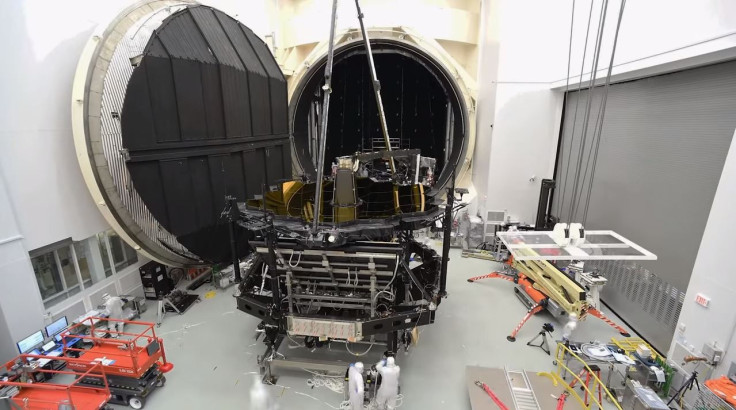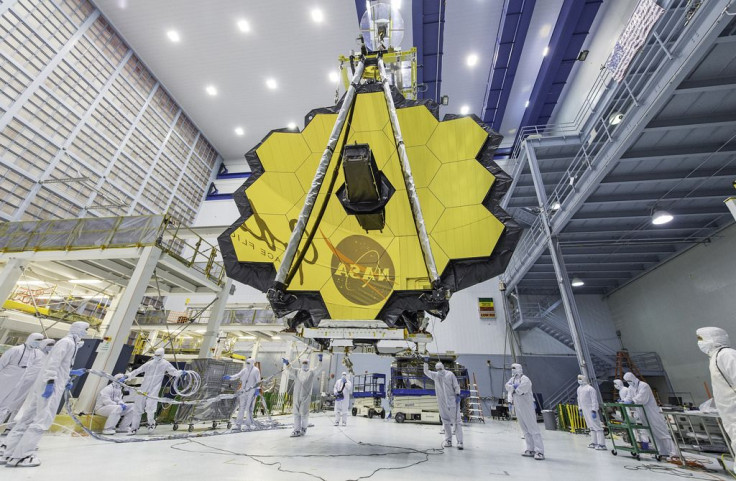Watch NASA Freeze Massive Webb Space Telescope In Cryochamber

The telescope that NASA is sending into space next year to unlock the secrets of the universe and potentially direct us toward extraterrestrial life is so large that the cryochamber where it took a recent nap completely dwarfed the scientists working on it.
NASA released a time lapse of workers (video below) preparing the James Webb Space Telescope and rolling it into the cryochamber at Houston’s Johnson Space Center, where it was chilling for a few months, including as Hurricane Harvey pounded Texas. The frigid temperature inside the chamber — as low as -447 degrees Fahrenheit — tested how the telescope would weather the conditions it will encounter after it is launched, including its own operating temperature.
In order to detect infrared light coming from places that are tremendously far away, the telescope has to be super cold. A special flower-shaped shield will also protect it from the sun’s light and heat.
It will be 1 million miles away when it does that.
The telescope came through the test just fine, bringing it one step closer to its mission of learning how the universe formed and whether aliens are out there.
Once it journeys to outer space, it will look deep into old galaxies and other solar systems that scientists believe have potential to support extraterrestrial life. With the latter observations, Webb will be looking for clues about habitable planets, on the hunt for water and comfortable atmospheres.
“If these planets have atmospheres, the James Webb Space Telescope will be the key to unlocking their secrets,” NASA exoplanet program scientist Doug Hudgins has said previously.

Webb has other functions as well, including investigating the space objects called brown dwarfs that are a halfway point between stars and planets. The telescope will be gathering information that will help scientists better understand how stars and planets form. According to NASA, that work could even help steer Webb in the right direction as it searches for habitable worlds around the universe.
Although the telescope was originally slated to head away from Earth in late 2018, its launch date has so far been pushed back to spring 2019.
© Copyright IBTimes 2024. All rights reserved.



















